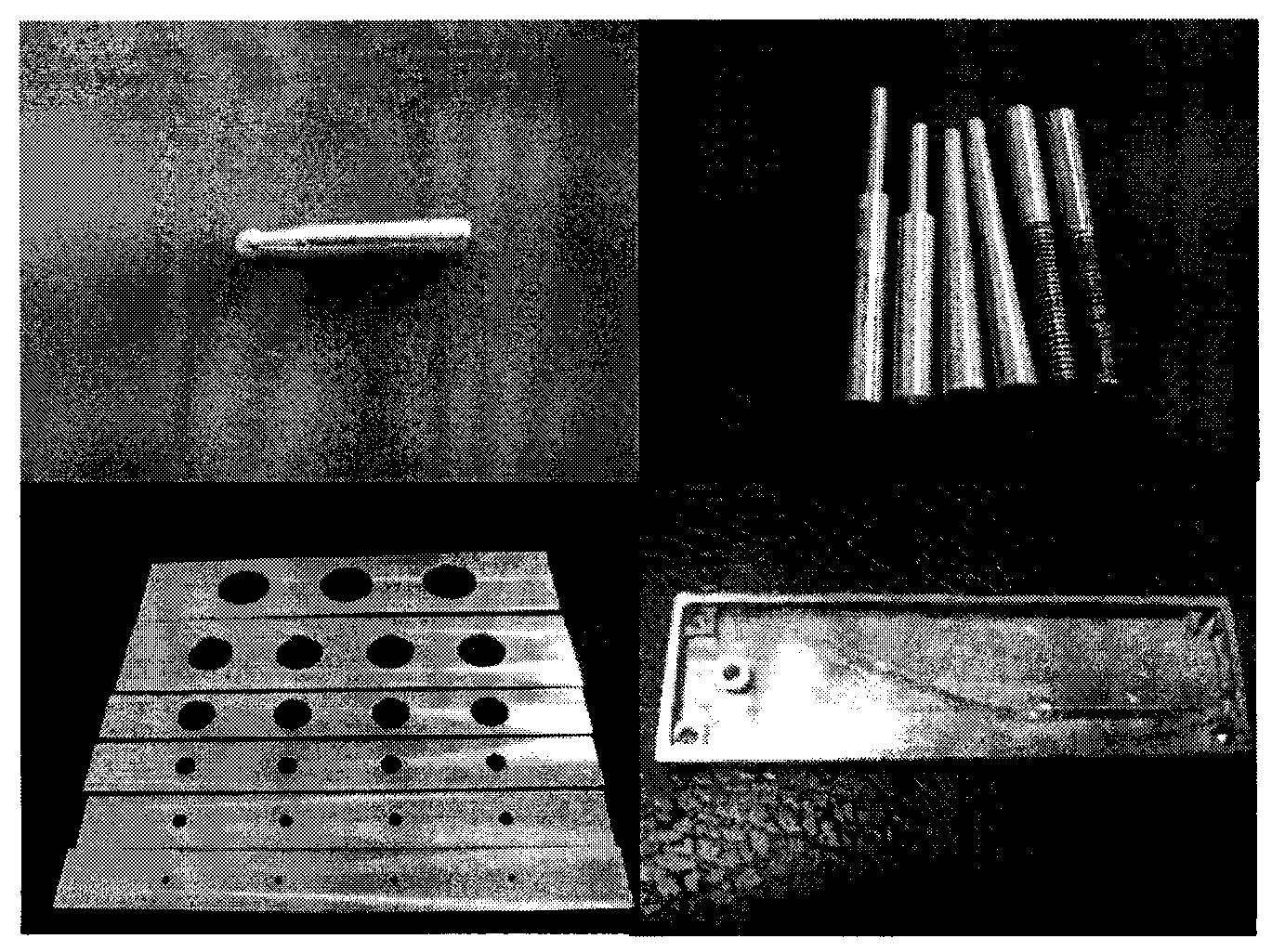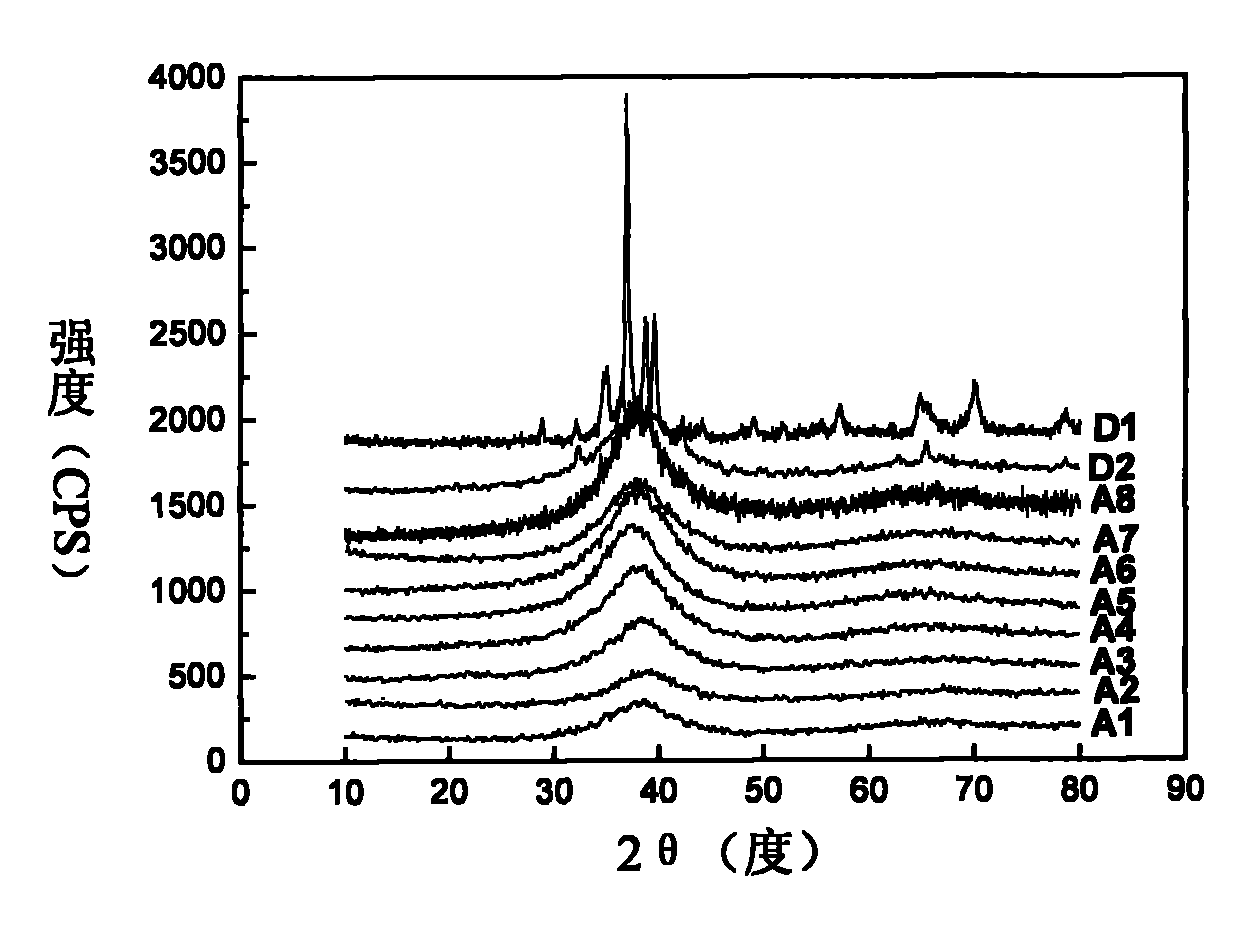Titanium-based amorphous alloy and preparation method thereof
An amorphous alloy and titanium-based technology, which is applied in the field of amorphous alloys and their preparation, can solve the problem that titanium-based amorphous alloys cannot be harmless to the human body, and achieve the best bending plasticity, large critical size, and wide preparation conditions. Effect
- Summary
- Abstract
- Description
- Claims
- Application Information
AI Technical Summary
Problems solved by technology
Method used
Image
Examples
Embodiment 1
[0029] This example is used to illustrate the preparation of the titanium-based amorphous alloy provided by the present invention.
[0030] A total of 50 grams of raw materials Ti, Cu, Ag, and Sc were put into a vacuum induction furnace according to a certain ratio, evacuated to 50 Pa, and then filled with argon (the purity of argon is 99% by volume), at about 2000 ° C , smelting for 2 minutes to fully melt the alloy raw material, and then remelt 3 times to fully alloy it;
[0031] Then the molten alloy sample is cast into a metal mold by high-pressure casting (wherein, pressure 20MPa, mold material SKD61) cooling molding (cooling speed is 102K / s), and the obtained size is 100 mm long * 10 mm wide * high 3 mm bulk Ti-based amorphous alloy sample Al. The mass fraction of elements contained in the alloy was analyzed by inductively coupled plasma emission spectroscopy (ICP-AES), and converted into atomic percentage, it can be known that the composition of the bulk titanium-based...
Embodiment 2
[0033] This example is used to illustrate the preparation of the titanium-based amorphous alloy provided by the present invention.
[0034] Prepare a titanium-based amorphous alloy according to the method in Example 1, except that the raw materials are Ti, Cu, Sn, Fe, Y, and obtain a large titanium-based amorphous alloy with a size of 100 mm long × 10 mm wide × 3 mm high Alloy sample A2. The mass fraction of the elements contained in the alloy is analyzed by inductively coupled plasma emission spectroscopy (ICP-AES), and converted into atomic percentage, it can be known that the composition of the bulk titanium-based amorphous alloy sample A2 is Ti 45 Cu 45 sn 4 Fe 5 Y 1 (Wherein, the total atomic percent of metallic impurity elements and the total atomic percent of nonmetallic impurity elements are 1% and 0.1%, respectively).
Embodiment 3
[0036] This example is used to illustrate the preparation of the titanium-based amorphous alloy provided by the present invention.
[0037] Prepare a titanium-based amorphous alloy according to the method of Example 1, except that the raw materials are Ti, Cu, Sn, Ag, Y, Sc, and obtain a large titanium-based alloy with a size of 100 mm long × 10 mm wide × 3 mm high Amorphous alloy sample A3. The mass fraction of the elements contained in the alloy is analyzed by inductively coupled plasma emission spectroscopy (ICP-AES), and converted into atomic percentage, it can be known that the composition of the bulk titanium-based amorphous alloy sample A3 is Ti 49 Cu 43 sn 3 Ag 3 Y 1 sc 1 (Wherein, the total atomic percent of metallic impurity elements and the total atomic percent of nonmetallic impurity elements are 2% and 0.15%, respectively).
PUM
| Property | Measurement | Unit |
|---|---|---|
| critical dimension | aaaaa | aaaaa |
| flexural strength | aaaaa | aaaaa |
| critical dimension | aaaaa | aaaaa |
Abstract
Description
Claims
Application Information
 Login to View More
Login to View More - R&D
- Intellectual Property
- Life Sciences
- Materials
- Tech Scout
- Unparalleled Data Quality
- Higher Quality Content
- 60% Fewer Hallucinations
Browse by: Latest US Patents, China's latest patents, Technical Efficacy Thesaurus, Application Domain, Technology Topic, Popular Technical Reports.
© 2025 PatSnap. All rights reserved.Legal|Privacy policy|Modern Slavery Act Transparency Statement|Sitemap|About US| Contact US: help@patsnap.com



